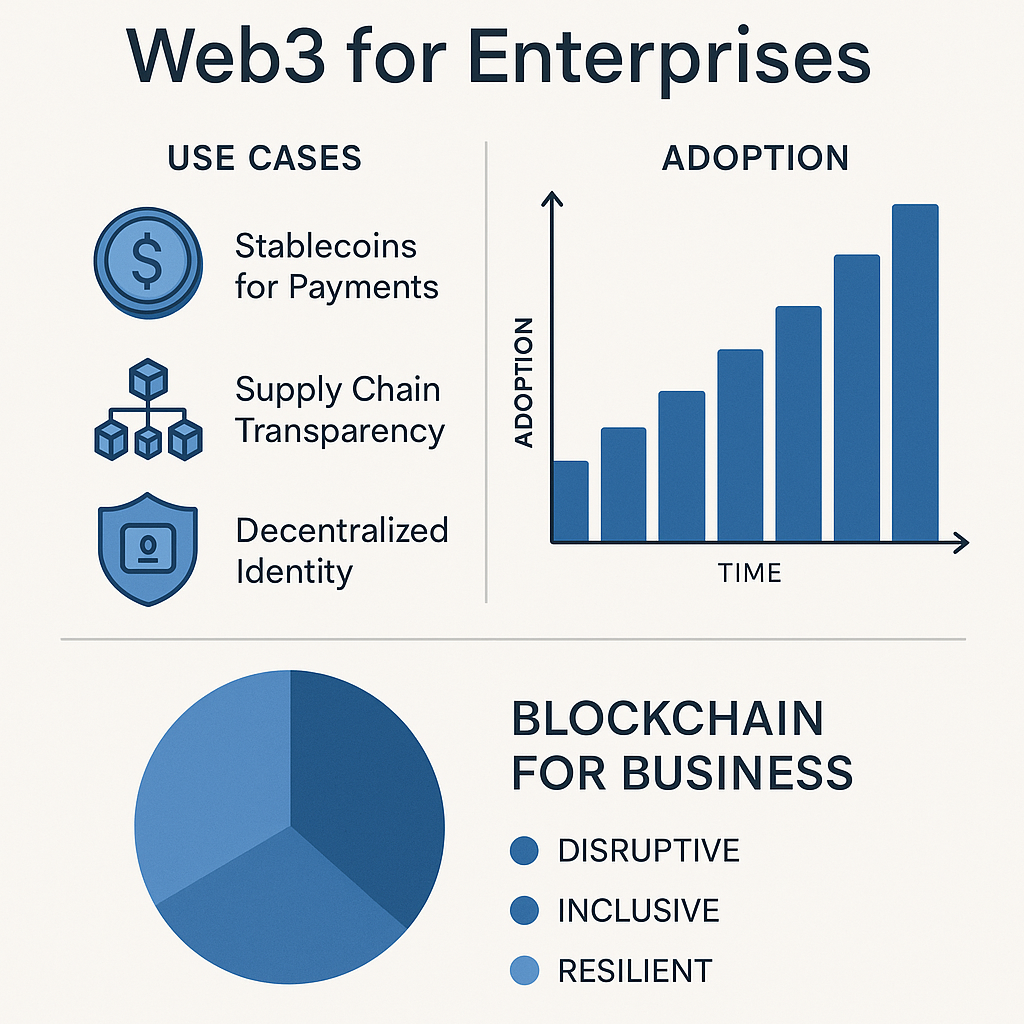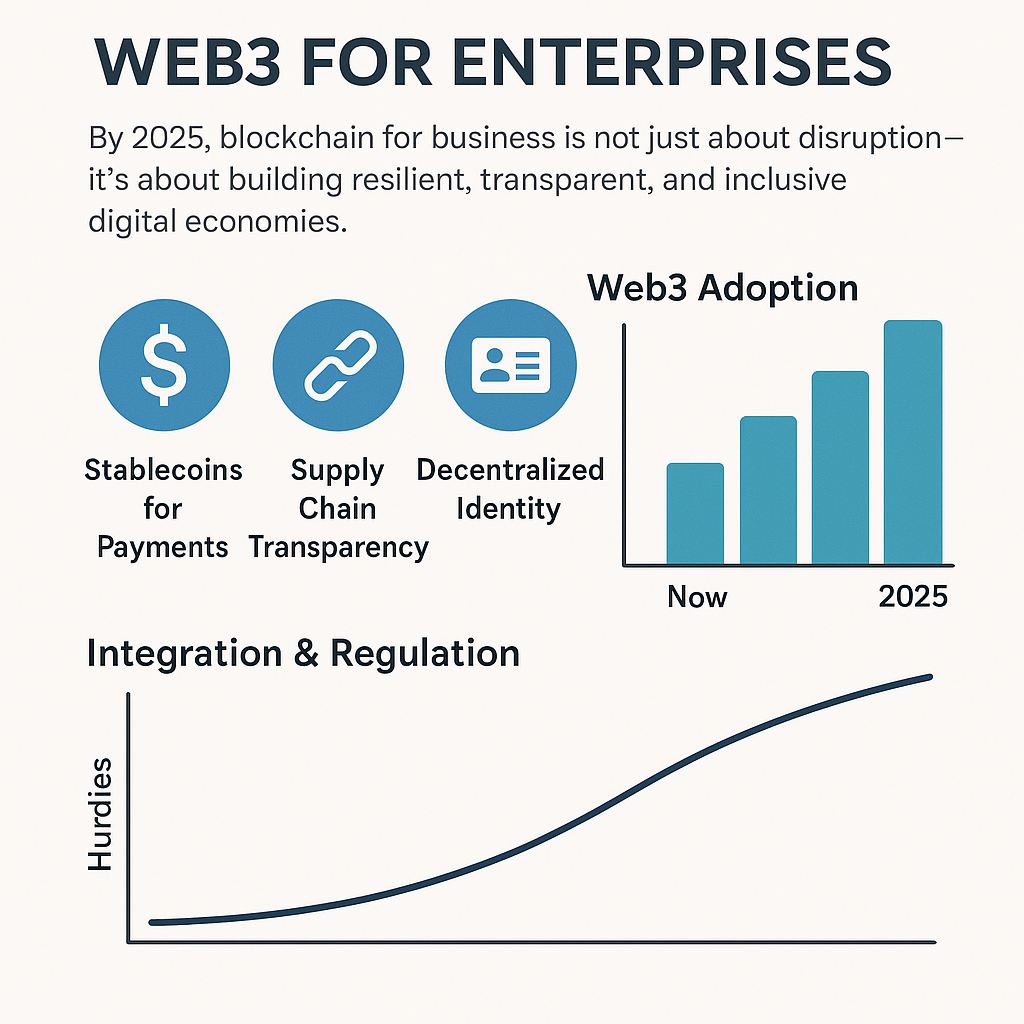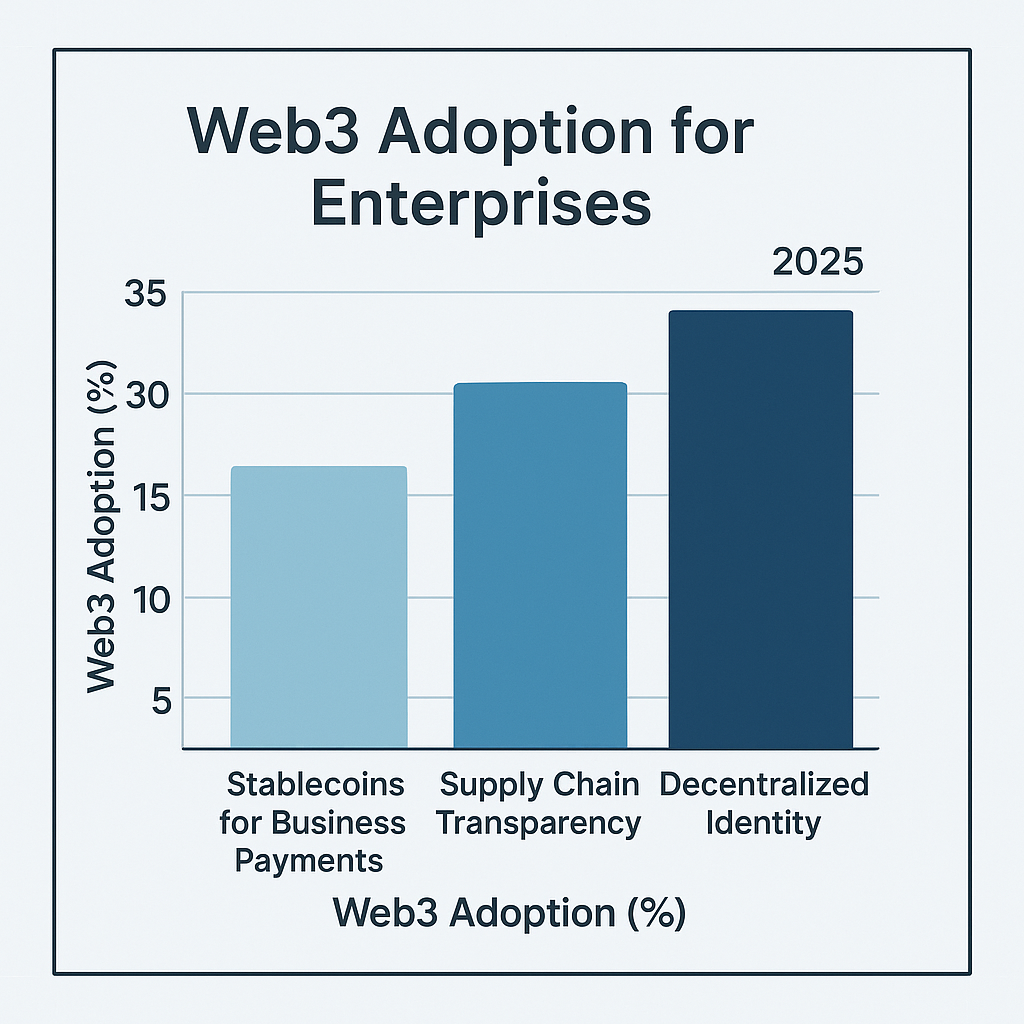Introduction
Discover how Web3 for enterprises is transforming business in 2025—from stablecoin payments to supply chain tracking and decentralized identity systems.
Key Web3 Use Cases in the Enterprise Sector
1. Cross-Border Payments with Stablecoins
Global enterprises are embracing stablecoins for business payments to eliminate the friction of international banking systems. Cryptocurrencies like USDC offer real-time settlement, lower transaction fees, and increased accessibility, particularly in emerging markets. Unlike traditional systems that take days and involve multiple intermediaries, stablecoins streamline payments and enhance financial inclusion.
2. Supply Chain Transparency and Tracking
Blockchain ensures supply chain transparency by recording every step of the logistics process immutably. From raw material sourcing to final delivery, businesses can track products in real-time, verify authenticity, and prevent fraud.
Leading sectors adopting blockchain for supply chain include:
- Pharmaceuticals
- Agriculture
- Fashion and luxury goods
- Automotive manufacturing
Enterprises are discovering that transparent logistics powered by Web3 improves trust and reduces compliance risk.
3. Decentralized Identity for Secure Access
Decentralized identity solutions offer enterprises an alternative to outdated, siloed identity management systems. With blockchain-based ID, users maintain control over their personal data while businesses enhance security and reduce the risk of data breaches. Enterprises in finance, healthcare, and HR are exploring decentralized identity to streamline KYC/AML processes and boost user privacy.
4. Enterprise Tokenization & Digital Assets
Many businesses are exploring tokenization of real-world assets such as real estate, intellectual property, and carbon credits. These assets can be fractionalized and traded securely on blockchain networks, unlocking liquidity and new investment opportunities.
Tokenized assets also support:
- Revenue sharing models
- ESG compliance
- Employee stock programs
This marks a major step in Web3 adoption by enterprises, making blockchain a financial as well as operational tool.



Challenges in Web3 Enterprise Adoption
1. Technical Complexity
Despite the benefits, Web3 for enterprises remains technically complex. Many traditional businesses lack the internal expertise to deploy decentralized technologies. This creates a demand for user-friendly Web3 infrastructure, APIs, and no-code development platforms tailored for enterprise use.
2. Regulatory and Compliance Hurdles
Web3 regulations vary significantly across countries. Enterprises face legal uncertainty around data privacy, crypto taxation, and blockchain-based contracts. Compliance with GDPR, KYC, and AML standards while using decentralized systems remains a top concern.
3. Integration with Legacy Systems
Seamless integration between Web3 protocols and existing enterprise IT systems is still a challenge. Bridging traditional databases with decentralized ledgers requires robust middleware and interoperability standards.
Startups vs. Enterprises: Who’s Leading?
While Web3-native startups are spearheading innovation, legacy enterprises are catching up fast. Startups benefit from agility and experimentation, while larger organizations leverage trust, infrastructure, and customer base to scale solutions.
Some notable developments:
- IBM and Maersk leading blockchain supply chain solutions
- Mastercard testing crypto payment rails
- Startups building DAO-based organizational tools
The balance between innovation and scale is crucial for sustainable Web3 adoption across the corporate landscape.
Conclusion
The shift toward Web3 for enterprises is transforming how businesses operate, transact, and engage with customers. With use cases spanning stablecoins for business payments, supply chain transparency, and decentralized identity, organizations are unlocking new efficiencies and capabilities.
Despite the hurdles of integration and regulation, Web3 adoption is growing across sectors. By 2025, blockchain for business is not just about disruption—it’s about building resilient, transparent, and inclusive digital economies.
Ukraine New Crypto Bill Embraces Bitcoin: 5 Big Impacts


